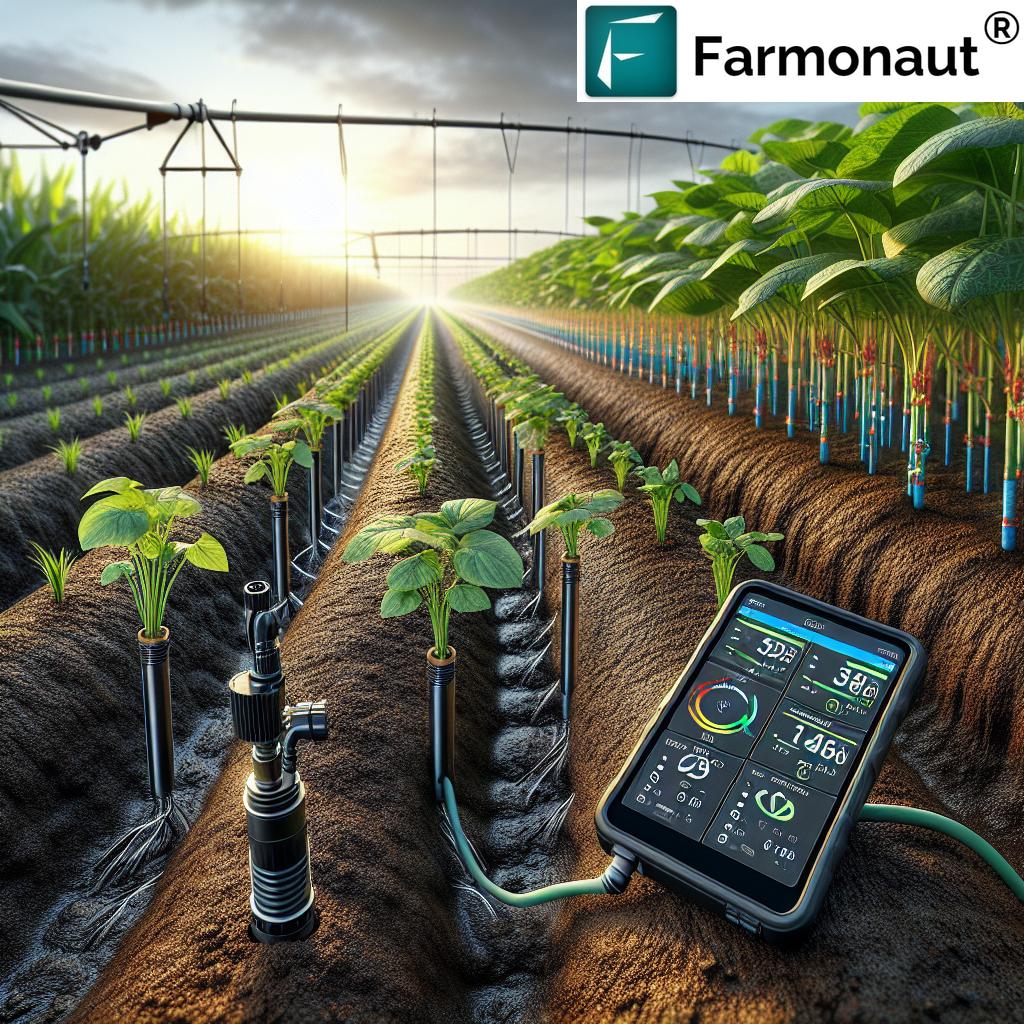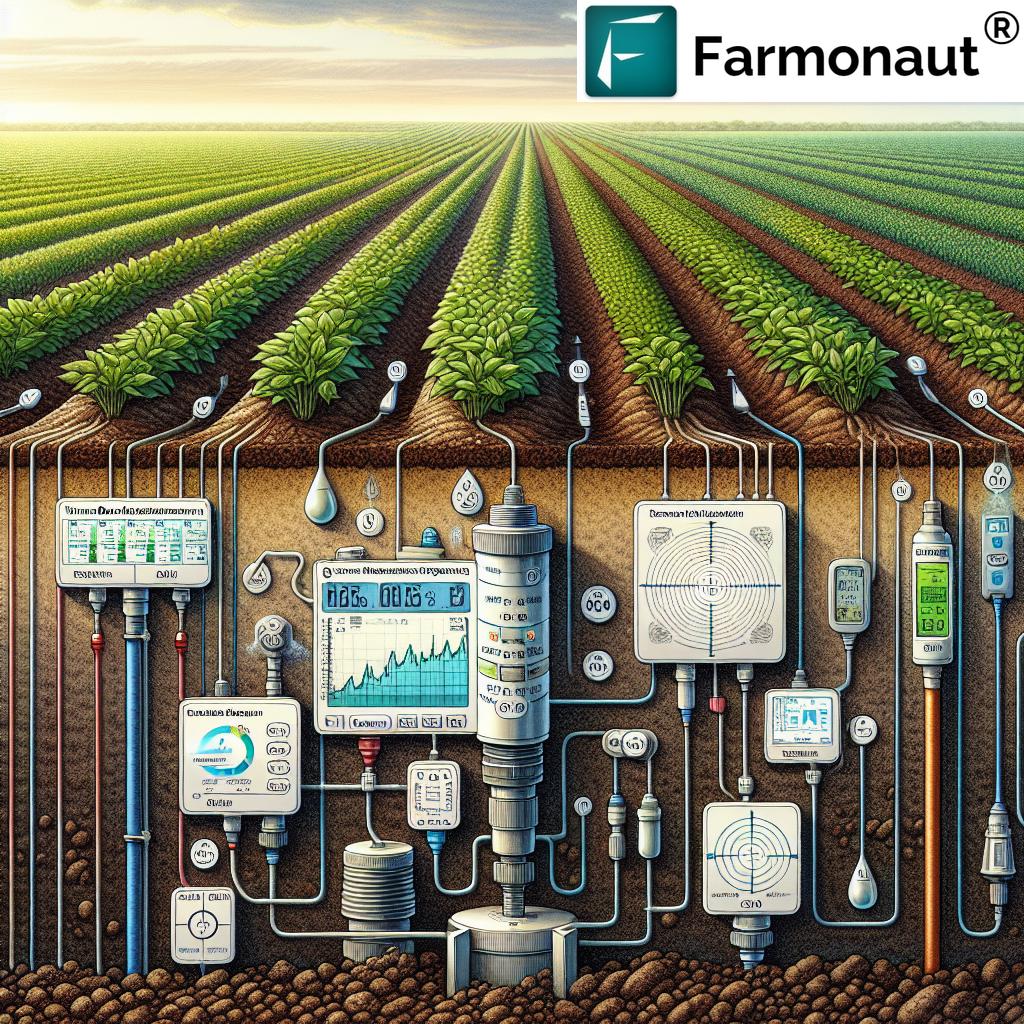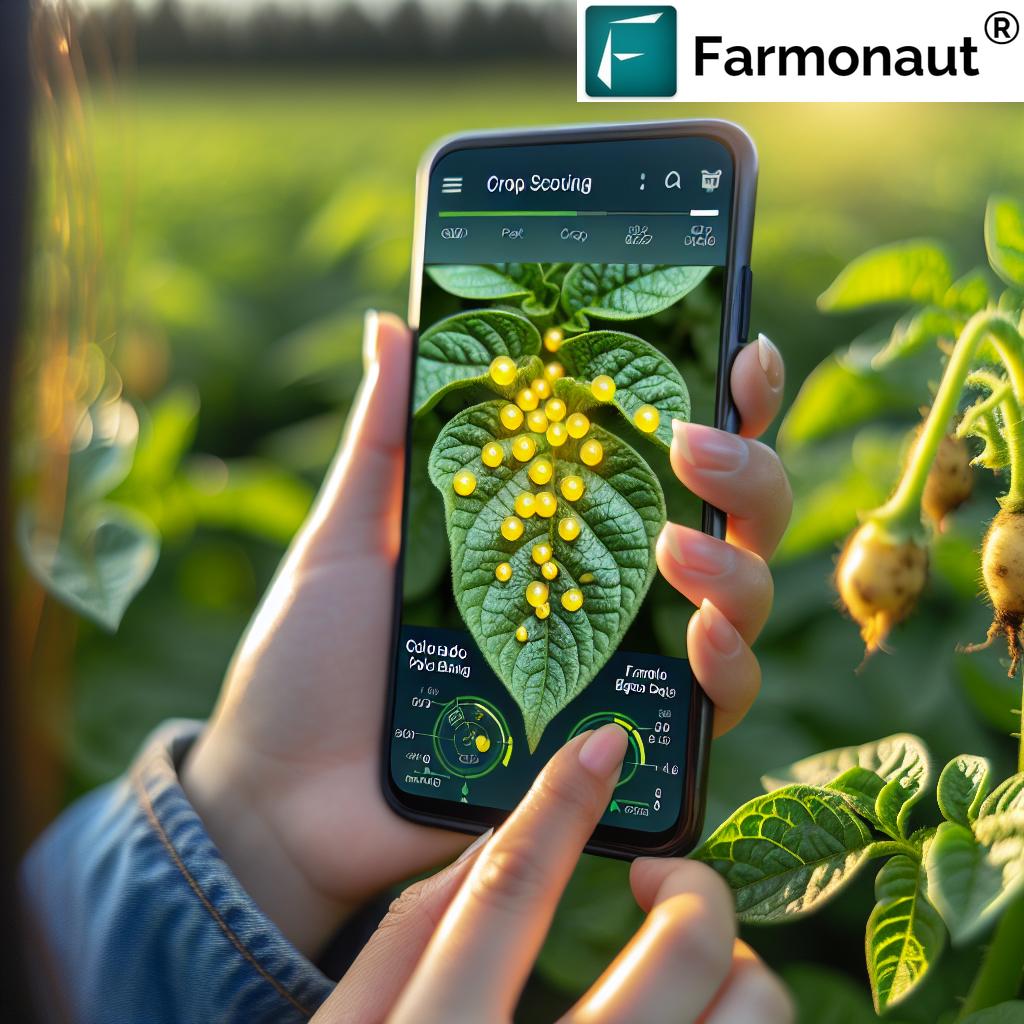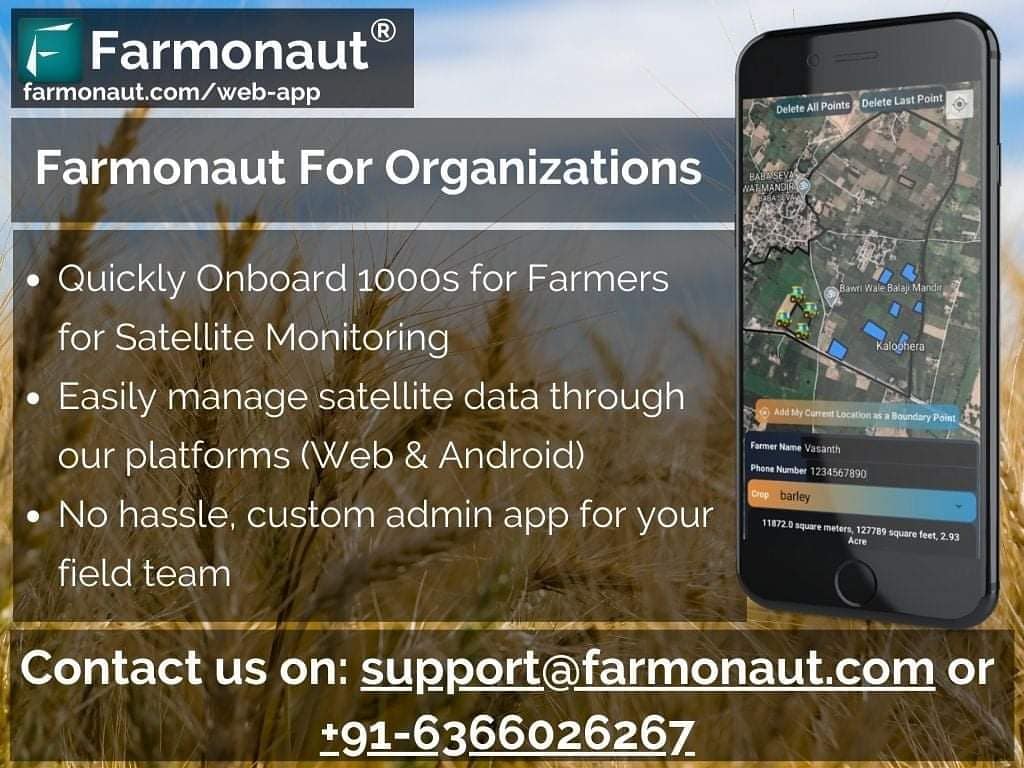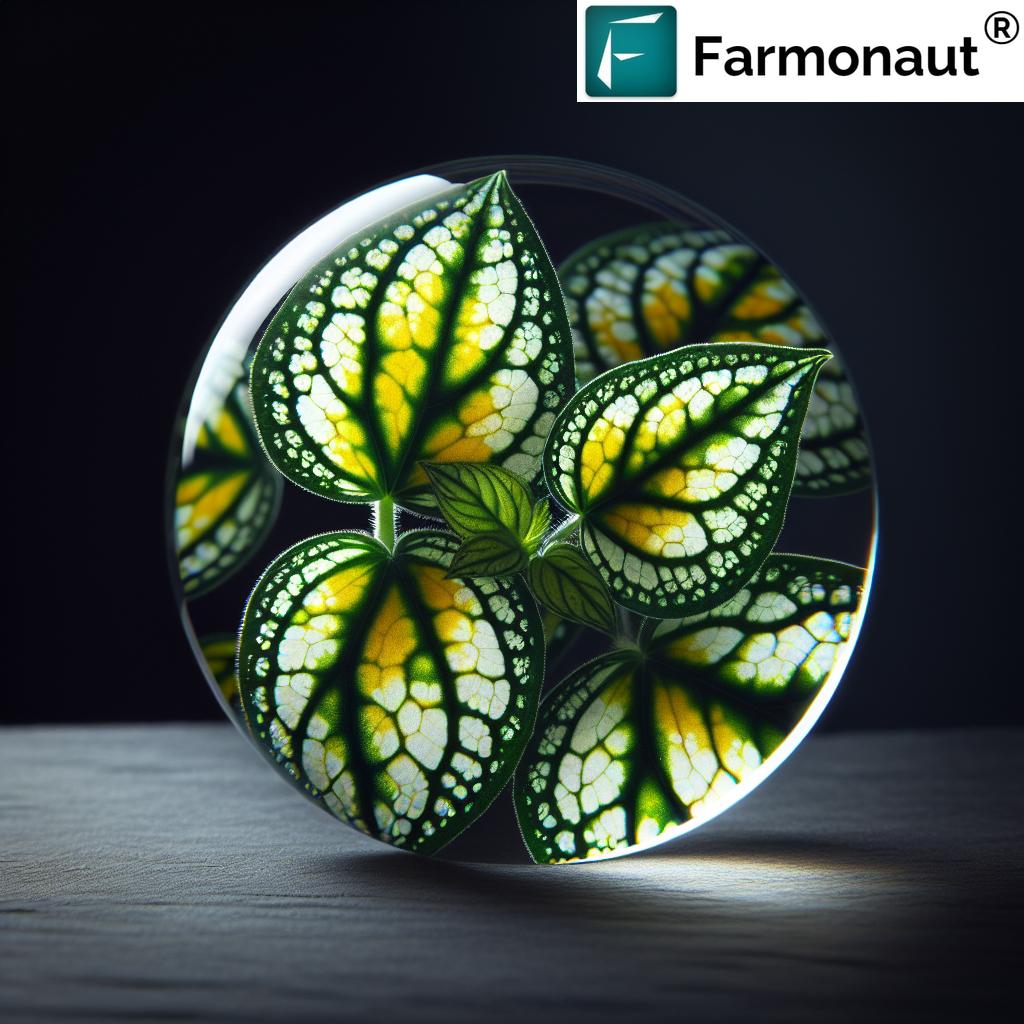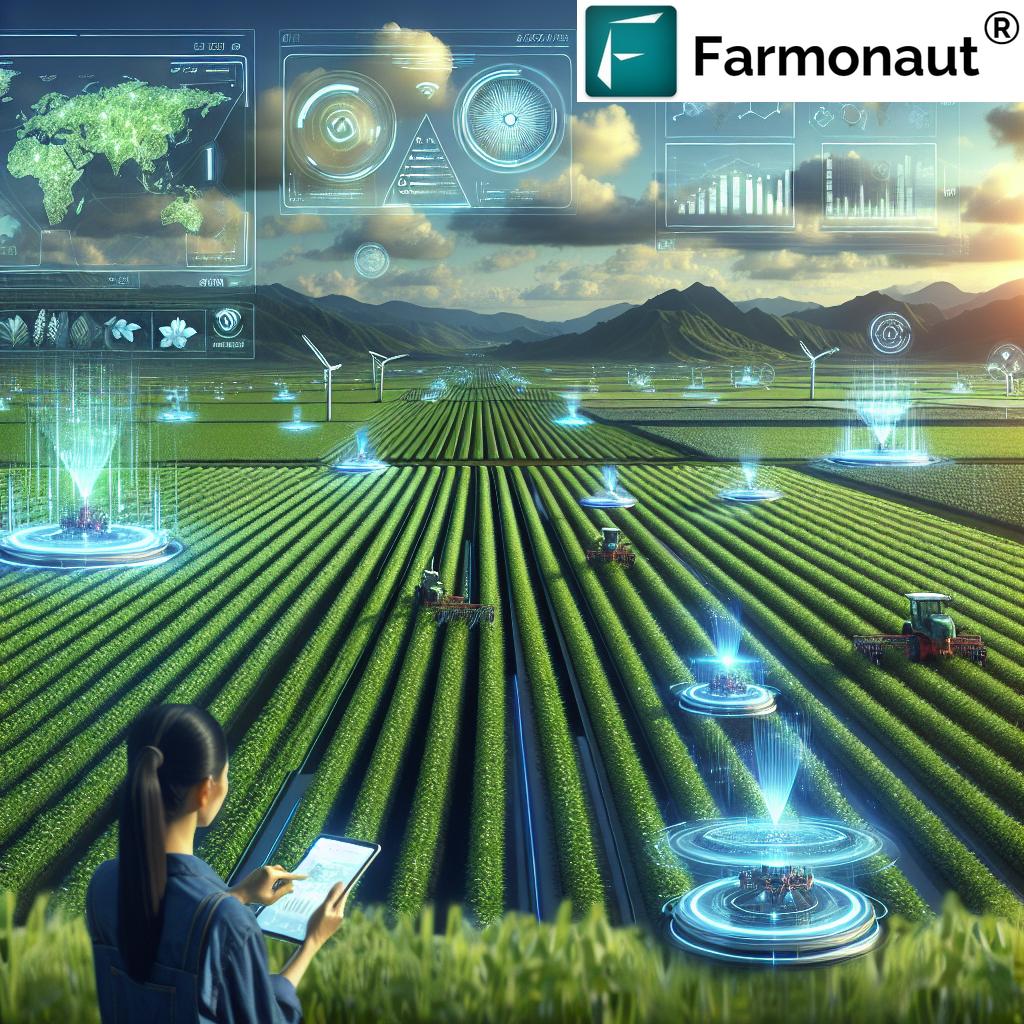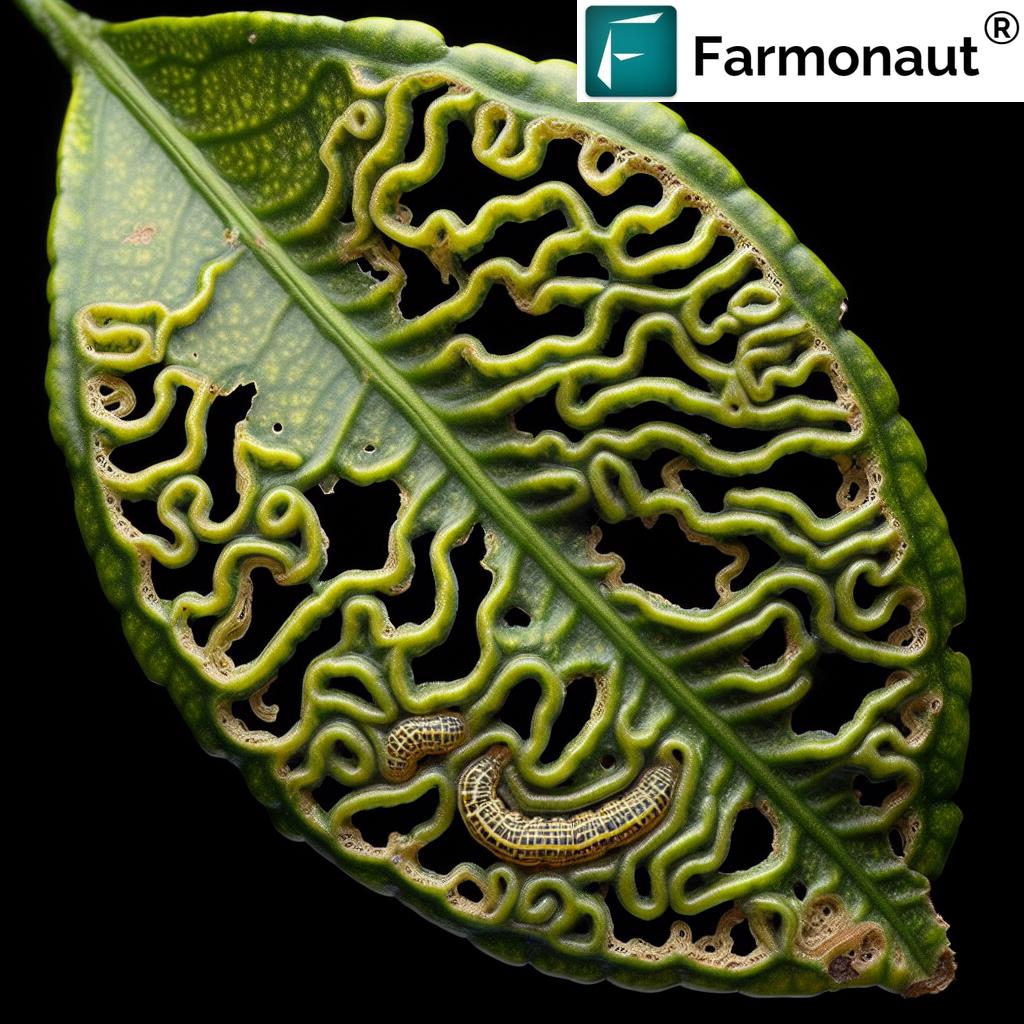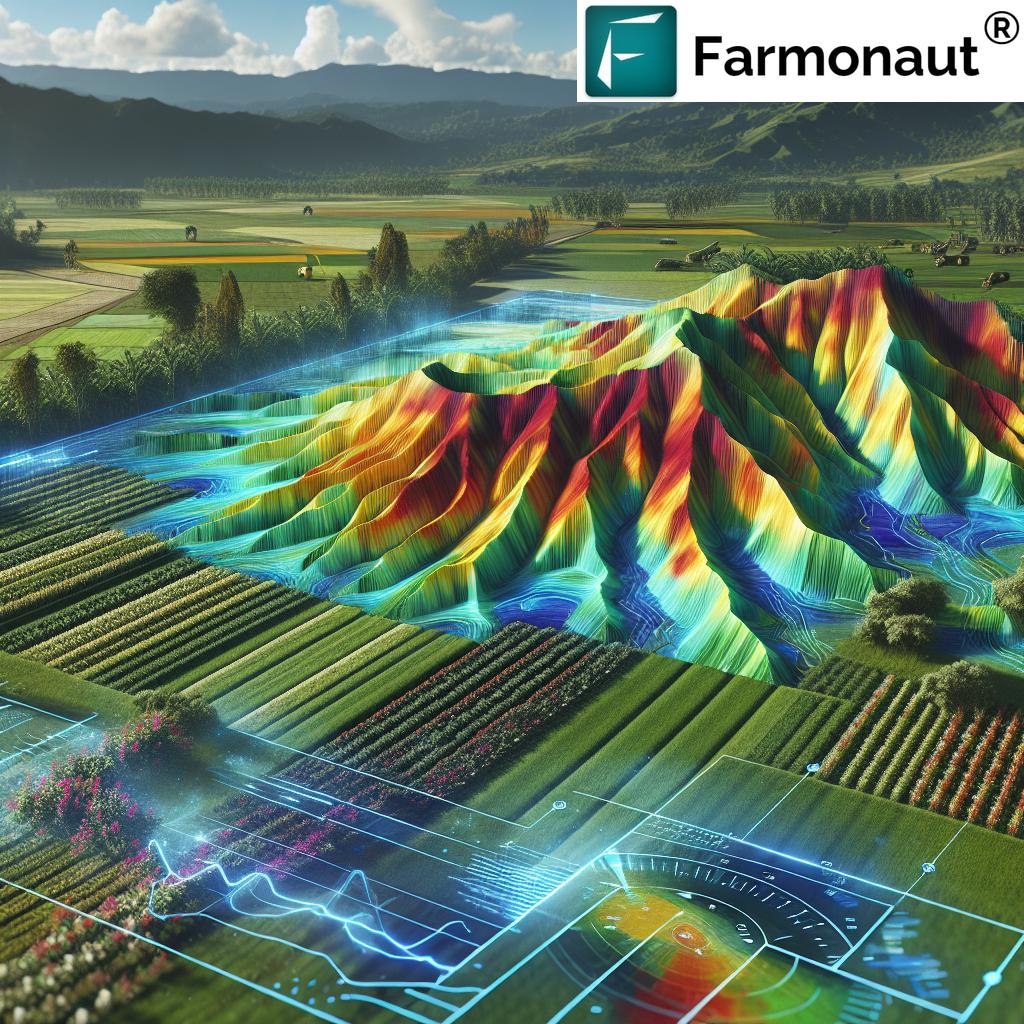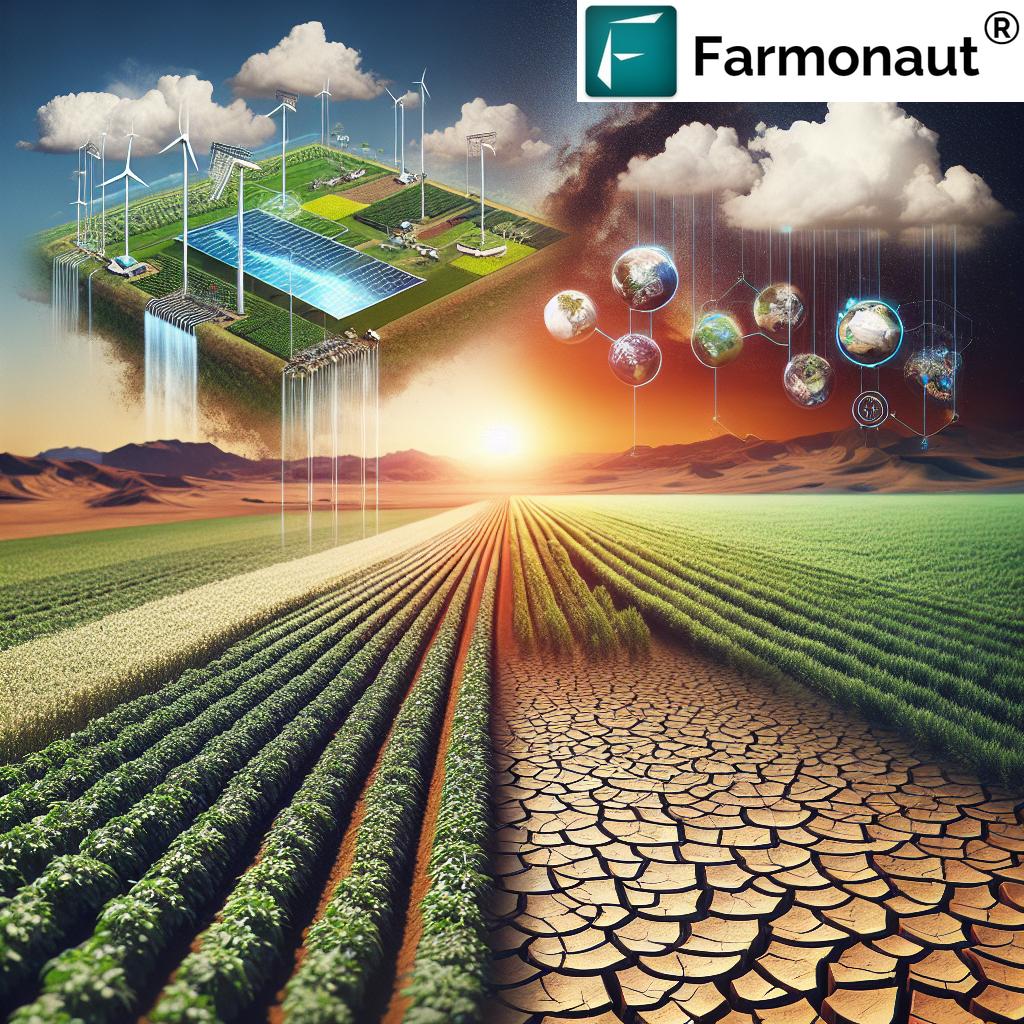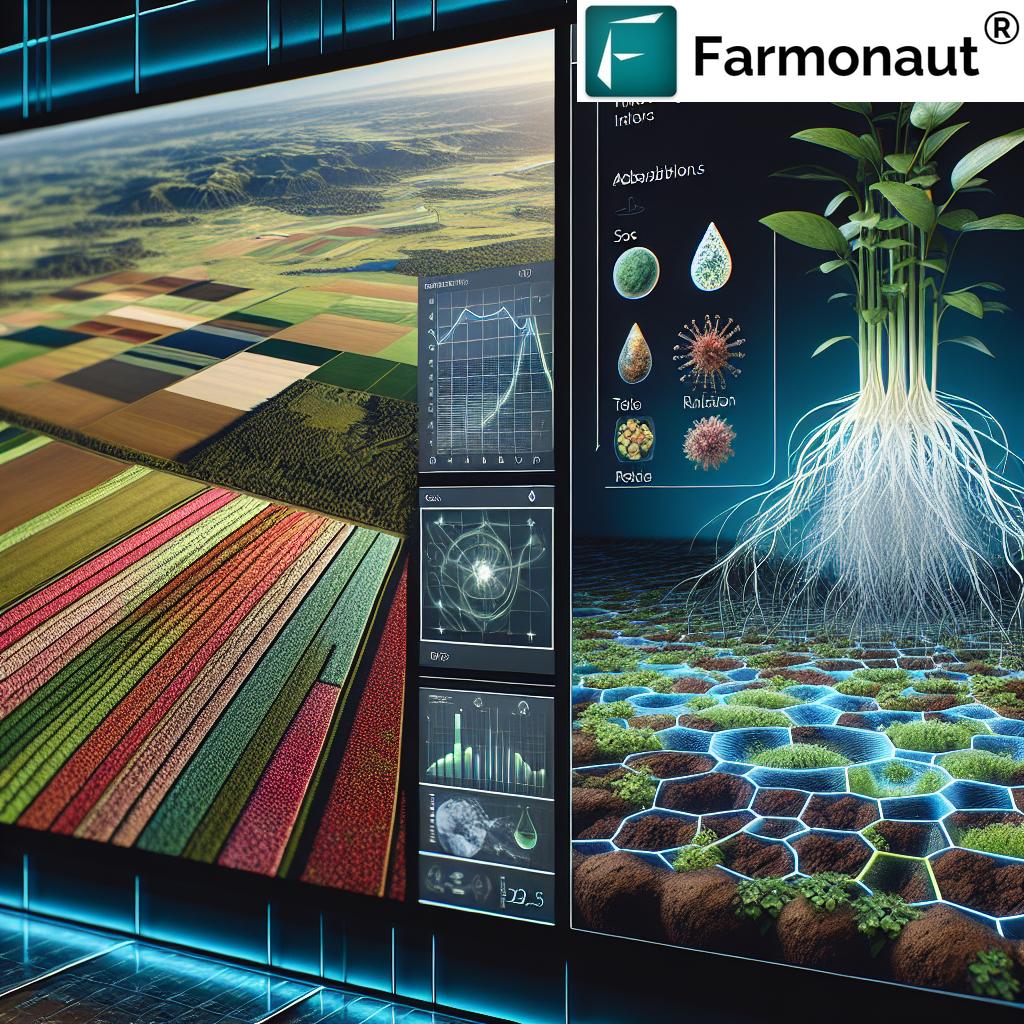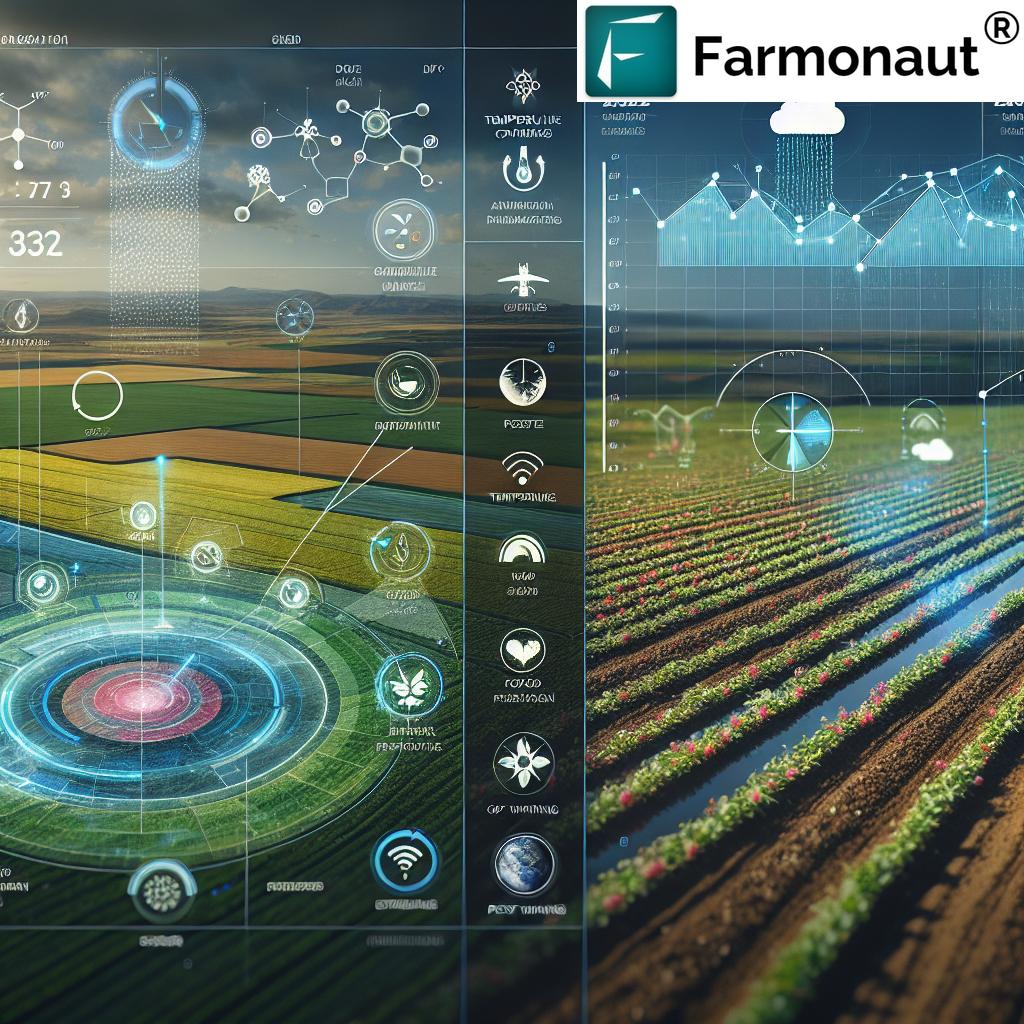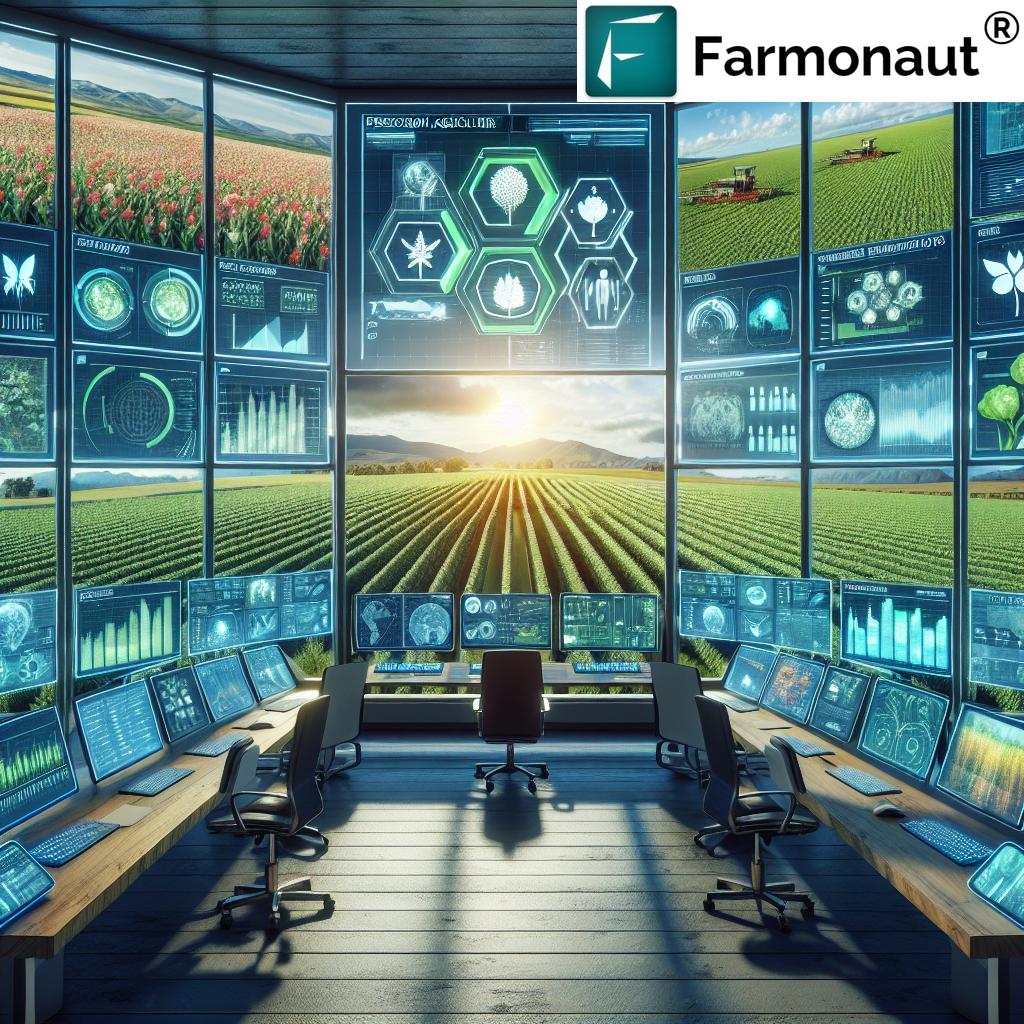Soil Moisture Sensors Agriculture: Instantly Boost Yields!
Table of Contents
- Introduction
- What Are Soil Moisture Sensors?
- Trivia: Did You Know?
- Types of Soil Moisture Sensors
- Comparison Table of Soil Moisture Sensor Technologies
- Key Applications in Agriculture
- Integrating Soil Moisture Sensors for Precise Irrigation Management
- Critical Factors for Successful Implementation
- The Future of Soil Moisture Sensors in Agriculture
- Farmonaut: Advanced Agricultural Sensor Technology
- FAQ: Soil Moisture Sensors in Agriculture
- Conclusion
“Soil moisture sensors can reduce irrigation water use by up to 30%, maximizing efficiency in precision agriculture.”
Introduction
In the rapidly evolving landscape of modern agriculture, soil moisture sensors have emerged as a transformative technology. By enabling precise irrigation management and providing real-time data, these sensors are revolutionizing the way we optimize water usage in farming and enhance crop yields. As the global demand for food rises and water resources become increasingly scarce, employing soil moisture monitoring for crops becomes essential to ensuring sustainable farming practices.
At Farmonaut, we are dedicated to making advanced agricultural sensor technology accessible and affordable for farmers worldwide. Utilizing cutting-edge tools and data-driven insights, we strive to empower farmers and agribusinesses to implement precision agriculture technologies with ease. In this guide, we’ll explore how different types of soil moisture sensors work, their key roles in the field, the benefits of real-time soil moisture data, and how Farmonaut supports the future of sustainable, yield-maximizing agriculture.
What Are Soil Moisture Sensors?
Soil moisture sensors are sophisticated devices used to measure the water content in soil. By transmitting and interpreting signals influenced by the soil’s dielectric properties, these sensors enable farmers to monitor moisture levels accurately and make data-driven decisions about irrigation management.
Without these sensors, irrigation decisions often rely on estimations or visual cues, which can lead to over-watering or under-watering—both detrimental to yields, soil structure, and resource conservation. By providing instant, real-time soil moisture data, these sensors pave the way for optimized water usage, improved crop health, and effective sustainable farming practices.
- Monitor in Real-Time: Enables timely action to maintain ideal soil conditions
- Reduce Resource Waste: Prevents unwarranted water use, fertilizer leaching, and soil erosion
- Enhance Decision-Making: Provides precise data to make informed decisions for every irrigation cycle
“Fields using advanced soil moisture sensors report yield increases of up to 20% compared to traditional irrigation methods.”
Types of Soil Moisture Sensors: Technologies Transforming Precision Agriculture
There are various types of soil moisture sensors employed in agriculture, each utilizing distinct technologies to measure soil water content with a high degree of accuracy. Understanding these differences helps us select the most suitable solution for our crops, soil types, and irrigation needs.
1. Time-Domain Reflectometry (TDR) Sensors
TDR sensors work by sending electromagnetic pulses along a probe inserted into the soil and measuring the time it takes for these pulses to reflect back. The reflection time is influenced by the soil’s dielectric properties, which correlate with moisture content.
- Advantages: Highly accurate, minimal calibration, low maintenance
- Ideal For: Research farms, high-value crops, and locations demanding precision
- Learn more about TDR technology
2. Frequency Domain Reflectometry (FDR) Sensors
FDR sensors also deploy the soil’s dielectric properties but analyze them using frequency changes in an electromagnetic signal as it passes through the soil.
- Advantages: High accuracy, capability to measure at multiple depths, suitable for a wide range of soil textures
- Common Uses: Greenhouses, multi-crop environments, and precision irrigation scheduling
- Explore FDR sensor monitoring solutions
3. Capacitance Sensors
Capacitance soil moisture sensors measure the soil’s dielectric permittivity, which is directly influenced by its water content.
- Advantages: Reliable, accurate soil moisture measurement, affordable
- Applications: Field crops, landscaping, irrigation management systems
- Detailed capacitance sensor overview
4. Neutron Probes
Neutron probes feature a radioactive source that emits neutrons into the soil. The scattering of these neutrons by hydrogen atoms in water molecules causes the probe to count the number of scattered neutrons. The count correlates with the soil’s water content.
- Advantages: Extremely accurate for deeper soil profiles
- Limitations: Requires safety protocols and regulatory compliance for field use
- Understanding neutron moisture gauges
5. Tensiometers
Tensiometric sensors measure the tension (suction) plants exert to extract water from the soil. These devices help us fine-tune watering schedules and prevent over- or under-watering.
- Advantages: Valuable for root-zone irrigation decision making
- Limitations: Most effective only in wet to moderately wet soils
- Discover tensiometer technology
Comparison Table of Soil Moisture Sensor Technologies
| Sensor Type | How It Works | Estimated Accuracy (%) | Cost Range (USD) | Response Time | Suitable Crops/Environments | Sustainability Benefits |
|---|---|---|---|---|---|---|
| Capacitance | Measures the dielectric permittivity between electrodes; correlates with water content | 90-95% | $30–$400 | Seconds | Field crops, horticulture, greenhouses | Minimizes water waste, gentle on soil |
| Tensiometric | Measures the tension (suction) needed for plants to extract water | 75-90% | $50–$300 | Minutes | Irrigation zones, root crops, orchards | Optimizes water scheduling, low energy use |
| Time Domain Reflectometry (TDR) | Sends electrical pulse along probe; reflection time correlates with moisture via dielectric properties | 95-99% | $400–$2,500 | Seconds | High-value crops, research plots | Most accurate, reduces total irrigation, minimal soil disturbance |
| Frequency Domain Reflectometry (FDR) | Analyzes frequency shift in electromagnetic signal through soil | 90-98% | $200–$950 | Seconds | All crops, variable depths, research | Offers deep soil profile, improves efficiency |
| Neutron Probe | Emits neutrons; scattered neutrons counted to correlate with water hydrogen in soil | 98-99% | $3,000–$7,000 | Minutes | Deep-rooted crops, research stations | Exceptional accuracy, deep profile mapping, big water savings |
| Gravimetric (reference) | Weighs soil before and after drying to measure water loss | 99% (laboratory) | Low (manual, lab required) | Hours | Research, calibration reference | Benchmark accuracy, non-invasive |
Key Applications in Agriculture: Soil Moisture Monitoring for Crops
The integration of soil moisture sensors and precision agriculture technologies is revolutionizing how we manage fields, allocate resources, and promote sustainable farming practices. By leveraging advanced data, farmers can improve yields, conserve water, and make informed decisions for each crop cycle.
Optimized Irrigation Management
With real-time data from our soil moisture sensors, we can:
- Precisely schedule irrigation to ensure crops receive adequate water without waste
- Reduce the risk of over-irrigation (which leads to nutrient leaching and erosion)
- Respond quickly to drought conditions to safeguard yields
- Get the facts on irrigation management and scheduling
Enhanced Crop Yield and Quality
By maintaining optimal soil moisture, our crops experience:
- Stronger root growth and development
- Increased yields—often by 10-20% compared to conventional irrigation
- Improved crop quality (better taste, weight, color, etc.)
- See more benefits of soil moisture monitoring
Water and Resource Conservation
Reducing excessive irrigation not only conserves water but also decreases input costs and ensures sustainable farming practices:
- Lower water bills and energy costs for pumping
- Preserve groundwater sources for future generations
- Enhance resilience against drought and climate change pressures
Pest, Disease, and Soil Health Monitoring
Precise soil moisture management helps prevent the conditions that favor pests and diseases, reducing the need for chemical intervention:
- Less fungal/microbial habitat due to controlled soil moisture
- Healthier soil structure and improved biodiversity
- Read how soil sensors fend off pests
- Improving farm-wide water savings with data-driven irrigation management systems enhances economic and ecological sustainability.
- Farmonaut’s carbon footprinting tools allow agribusinesses and progressive farmers to monitor emissions, ensuring their operations meet rigorous environmental standards.
Integrating Soil Moisture Sensors for Precise Irrigation Management
Effectively using soil moisture sensors for irrigation management involves more than just installing devices. We must carefully select, install, calibrate, and interpret sensor data to maximize impact on yield optimization and water conservation.
Sensor Selection: Choosing the Right Technology
The selection depends on:
- Soil type: Sandy, clay, silt, or loamy soils interact differently with water and sensor probes.
- Crop type: Deep-rooted perennials may require deep-profile sensors like TDR or neutron probes.
- Budget & scale: Capacitance and tensiometric sensors are affordable for smallholder farmers; FDR and TDR are preferred in research and large farms.
- Guidance on sensor selection
Installation and Sensor Placement
For accurate readings, we recommend:
- Placing sensors at root zone depths (commonly 15cm, 30cm, and 60cm for most crops)
- Distributing sensors across different zones to account for field variability
- Ensuring good contact between the probe and soil and avoiding placement near rocks or debris
- Best practices for sensor installation
Calibration and Maintenance
Even high-end sensors require regular calibration for long-term accuracy and reliability. Maintenance tips include:
- Cleaning probes, checking battery power (if applicable), and inspecting for wire or housing damage
- Conducting periodic calibration checks, especially at the beginning of each season
- Documenting calibration values for future reference
Data Interpretation: Making Informed Irrigation Decisions
It’s vital to analyze sensor data correctly:
- Learn what constitutes “field capacity” (maximum water holding) and “wilting point” for each crop-soil combination
- Use real-time soil moisture data from sensors to decide when and how much to irrigate
- Train staff and stakeholders in data interpretation and app-based visualization tools
Pro Tip: When integrating field sensors with remote sensing platforms (like Farmonaut), we gain both ground truth and satellite-overview perspectives—ideal for scaling up precision agriculture technologies.
Explore the benefits of large-scale farm management tools offered by Farmonaut, designed to make soil and water management seamless for expansive or multi-location agricultural operations.
- For agribusiness fleets: Farmonaut offers fleet management solutions to synchronize farm operations for optimal planting, irrigation, and harvesting—all on a single dashboard.
- Looking to digitize supply-chain transparency? Our blockchain-based traceability platform is the answer—ensuring crop data from soil to shelf.
- For financial institutions and risk managers: Farmonaut provides satellite crop loan & insurance verification for secure, unbiased lending and claims processes.
Critical Factors for Successful Implementation
To maximize the potential of soil moisture sensors in modern agriculture, we should consider:
- Soil Compatibility: Some sensors may require additional calibration or may be influenced by high clay content, salinity, or organic matter.
- Climate and Crop Suitability: Match the sensor with irrigation methods (drip, sprinkler, flood), crop root depth, and prevailing weather patterns.
- Integration with Digital Platforms: Choose sensors compatible with IoT dashboards, mobile apps, or satellite-based analytics to streamline farm management workflows.
- Human Factors: Train staff to maintain, interpret, and act on sensor readings; regular knowledge upgrades are a must for staying ahead.
API access: For agritech developers or advanced growers, integrate soil moisture data with your own digital infrastructure via the Farmonaut API and explore our API developer documentation for seamless sensor and satellite data synchronization.
The Future of Soil Moisture Sensors in Agriculture
We are standing on the brink of the next agricultural revolution—one powered by advanced sensor technology, artificial intelligence, and digital integration. The next generation of soil moisture sensors is expected to offer:
- Higher accuracy and reduced maintenance with self-calibrating, smart devices
- Wireless networks and IoT compatibility for seamless data collection and sharing
- Integration with automated irrigation systems for hands-free water management
- Cost reductions enabling greater adoption by smallholders and resource-limited growers
- Comprehensive analytics—combining on-ground sensors with satellite crop health and water data
- Advances in blockchain traceability—guaranteeing transparency from field to final product
By adopting these precision agriculture technologies today, we lay a strong foundation for resilient, climate-smart, and high-yield farming tomorrow.
Farmonaut: Advanced Agricultural Sensor Technology for Precision & Sustainability
At Farmonaut, our mission is to make precision agriculture affordable and accessible to all. While we don’t manufacture or sell soil sensors, we empower our users by integrating soil and water data from various sources, including satellite imagery and on-ground sensors. Here’s how our platform supports your soil moisture management goals:
- Satellite-Based Crop & Moisture Monitoring: Real-time, multispectral data—track soil moisture levels, crop health (NDVI, EVI), and irrigation impact zone-by-zone.
- AI-Driven Advisory: Farmonaut’s Jeevn AI system analyzes data and weather forecasts for custom, actionable irrigation and crop care instructions.
- Mobile & Web Dashboards: Monitor your farm from anywhere via our intuitive Android, iOS, and browser apps (with one-click access here).
- Blockchain Traceability: Ensure comprehensive data recording for certification, sustainability compliance, and consumer trust—see our traceability product page.
- Resource & Fleet Management: Synchronize all your operations—irrigation, fertilization, logistics—using Fleet Tools and Large-Scale Management Solutions.
- Plantation and Forest Advisory Services: Round-the-year AI-powered insights for forestry and perennial plantations.
Subscription model: Farmonaut operates via flexible, affordable subscriptions.
FAQ: Soil Moisture Sensors in Agriculture
Q1. What is the ideal placement depth for soil moisture sensors?
For most crops, sensors should be installed at multiple typical root depths—such as 15, 30, and 60 cm—to accurately reflect moisture levels experienced by the plants. This enables precise irrigation scheduling and maintains optimal crop health.
Q2. How do I choose between capacitance, TDR, and tensiometer soil moisture sensors?
Capacitance is affordable, reliable, and perfect for field crops; TDR offers lab-grade accuracy for research or precision-focused growers; tensiometers are useful for root-zone management, but are less effective in dry soils. Factor in your budget, crop type, and required accuracy.
Q3. Are soil moisture sensors enough for full irrigation automation?
Soil moisture sensors are a foundational part of automated irrigation. For “hands-free” irrigation, these sensors should be connected to a programmable controller that activates the irrigation system when preset soil moisture thresholds are crossed, integrating with farming apps for the full solution.
Q4. Can I integrate sensor data with Farmonaut?
Absolutely! Farmonaut’s apps and API allow you to visualize, analyze, and use satellite-based and on-ground sensor data for holistic farm management and precise water usage strategies.
Q5. How can soil moisture monitoring reduce my farm’s carbon footprint?
By preventing unnecessary irrigation, soil moisture sensors lower the energy required for water pumping and minimize runoff. Farmonaut’s carbon footprinting feature helps quantify and optimize these savings for environmental compliance.
Q6. How do I get started with advanced soil moisture monitoring?
Start by defining your crops’ needs, soil properties, and farm goals. Use a combination of field sensors and satellite-based monitoring with Farmonaut’s platform, and take advantage of our apps for actionable decision-making.
Conclusion: A Smarter, Sustainable Future with Soil Moisture Sensors
Soil moisture sensors represent one of the most impactful technological advances in modern agriculture. By providing real-time soil moisture data and supporting precision irrigation management, these sensors optimize water usage in farming, reinforce sustainable farming practices, and ultimately deliver higher yields and better crop quality.
Leveraging advanced agricultural sensor technology alongside satellite analytics bridges the gap between tradition and innovation—equipping us to meet today’s challenges and tomorrow’s opportunities. With Farmonaut, every farmer—whether small or large-scale—can benefit from actionable insights, seamless digital integration, and a dedicated partner in their journey toward greater productivity and sustainability.
Take the next step: Empower your farm with precision agriculture technologies today!
Ready to optimize your yield, save water, and secure farm sustainability?
Get started with Farmonaut today!





